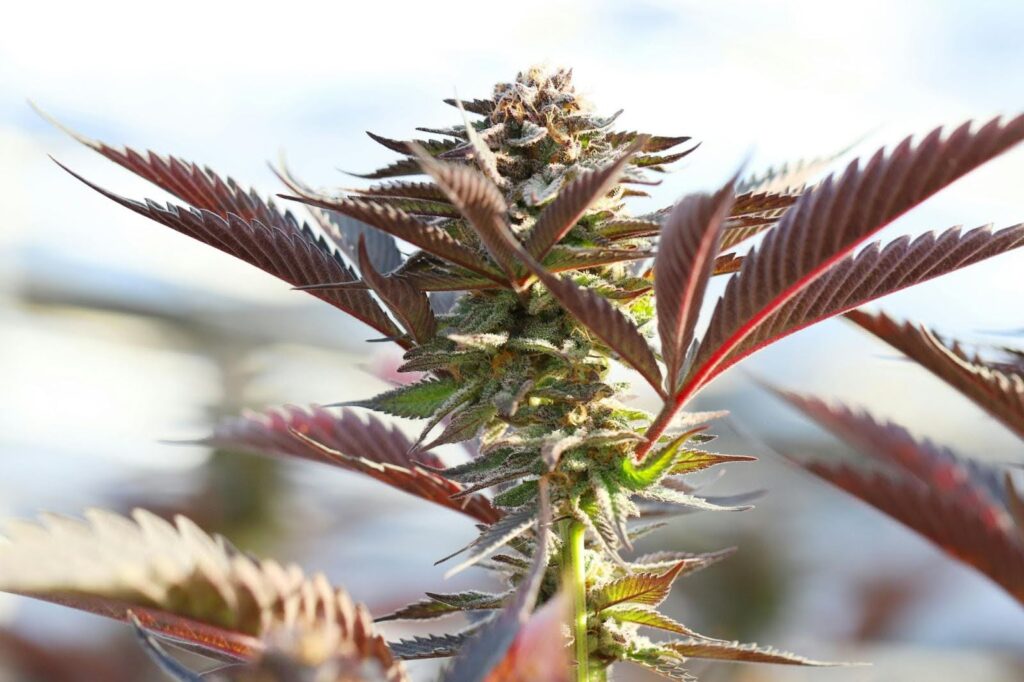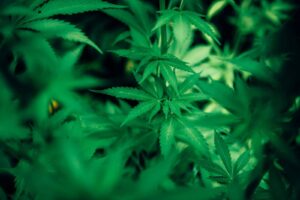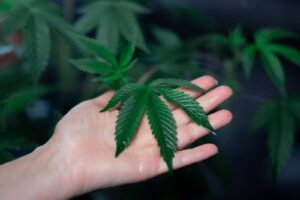Are you tired of guessing how much water your cannabis plants need? Overwatering leads to oxygen deprivation and root rot, while underwatering prevents nutrient absorption and stunts growth. These problems can make growing cannabis stressful and unpredictable.
But the trial-and-error days of your cannabis growth are behind you now. With soil moisture sensors, you can be sure that the precise amount of water is going to the right plants when it should be.
These sensors provide real-time data, making it easier to optimize your irrigation strategy and avoid costly mistakes. Adopting this technology will give you healthier plants, higher yields, and less stress throughout the growing process.
This article discusses the importance of soil moisture, the advantages of advanced sensors, and ways to integrate them into your cannabis-growing practice. Learn precise measurement techniques, smart irrigation innovations, and the cutting edge.
Why Soil Moisture Matters In Cannabis
Healthy soil moisture levels are the foundation for vibrant growth, optimal nutrient uptake, and high yields.
Let’s break down the key reasons soil moisture matters and how it impacts your plants.
- Overly damp soil: When the soil is too wet, it will suffocate the roots by cutting off their oxygen supply, causing root rot and fungal infections.
This stops growth and, if not corrected, can kill your plants entirely. In addition, damp conditions can encourage pests and molds to grow, further harming your plants and requiring intervention.
- Overly dry soil: Soil that dries up too much prevents nutrient uptake and slows down photosynthesis, leaving plants weak and unable to thrive.
Prolonged dryness can also lead to hardened soil structures, making it difficult for roots to penetrate and expand, thus limiting the plant’s growth potential.
- Achieving balance: The perfect moisture balance fosters a healthy root system, supports efficient nutrient uptake, and creates an ideal environment for strong growth and higher yields.
- Long-term benefits: A consistent level of moisture management lessens the threat of water-stress-related stunted growth, so your plants will always thrive during the cycle.
Now we will discuss the factors that affect soil moisture in cannabis.
Factors That Affect Soil Moisture In Cannabis
Environmental factors are important in determining soil moisture levels because they affect the water availability for crops and their growth.
Understanding this enables growers to vary their irrigation patterns to maintain proper growing conditions. Here are some factors that affect soil moisture in your cannabis plant.
- Temperature and humidity: High temperatures accelerate evaporation rates, causing soil to dry out quickly, while low humidity levels exacerbate the drying process.
Conversely, cooler temperatures and higher humidity slow evaporation, requiring less frequent watering.
- Composition of the soil: Sandy, loamy, or clay soils are common. The composition of the soil mainly affects its water retention and drainage capacity.
Sandy soils drain fast, so the plant needs more frequent watering. Clay soils retain water and can easily be compacted.
- Pot size and material: The smaller the pot, the faster the soil dries up because there is little soil. The bigger it is, the longer the soil will maintain moisture.
The material of the pot also plays a role in how the water will diffuse or fall out.
For example, ceramic and plastic versus fabric, which promotes good aeration but dries out faster than plastic.
- Light exposure: Higher exposure to bright light, whether sunlight or grow lights, will increase the soil temperature and speed up evaporation.
- Air circulation: Good air circulation helps dry the soil evenly, reducing the chances of waterlogging in specific areas. However, excessive air movement will speed up evaporation, necessitating more frequent monitoring.
- Plant growth stage: Cannabis plants require different amounts of water depending on their growth stage. Seedlings require less water than mature plants at the flowering stage, which is the most water-intensive.
Monitor these factors with soil moisture readings to develop an irrigation schedule promoting uniform and healthy growth during the growing cycle.
So, how do soil moisture sensors improve your cannabis yield? Let us find out.
How Soil Moisture Sensors Make a Difference In Cannabis
Soil moisture sensors precisely measure the water content in the root zone. These tools ensure your cannabis plants receive the right amount of water when they need it most.
By leveraging their capabilities, you can avoid common mistakes such as overwatering, which leads to oxygen deprivation, or underwatering, which stresses the plants and reduces growth.
Integrating these sensors into smart irrigation systems allows you to automate watering schedules, making cultivation more efficient and reducing manual effort.
- Prevents overwatering and underwatering: Soil moisture sensors take the guesswork out of watering, allowing you to provide just the right amount of water.
This prevents the problems associated with overwatering, such as root rot, and underwatering, like nutrient deficiencies. Additionally, it reduces water waste, contributing to a more sustainable cultivation practice.
- Offers multi-functional data: These sensors go beyond basic functionality by providing data-driven insights into your soil’s conditions.
Advanced models can measure soil temperature, salinity, and even the evaporation rate, providing a comprehensive understanding of the root zone environment.
- Customizable and adaptable: This additional data allows you to tailor your irrigation practices to your plant’s needs, ensuring optimal growth and avoiding common pitfalls associated with traditional watering methods.
You can also set specific moisture thresholds that automatically trigger irrigation, providing precision at every growth cycle stage.
- Supports early problem detection: By constantly monitoring soil conditions, these sensors can detect early signs of potential issues, such as salt buildup or improper drainage, allowing you to address them before they become significant problems.
Curious about early problem detection in your cannabis yield? PlanaCan eliminates the guesswork from monitoring soil conditions. Moreover, PlanaCan captures all data on every harvest so that key decisions may be connected to their real impact. Consolidating all your insights in one place refines your methods for higher yields and bigger profits.
Real-time Insights For Precision
Soil moisture sensors provide real-time data, allowing you to react immediately to your plant’s needs. Such sensors provide continuous updates, allowing you to adjust your watering habits based on soil conditions.
- Continuous updates: Real-time monitoring allows tracking of soil moisture fluctuations as they happen, enabling adjustments to be done in real time to optimize optimal growth conditions. Plants are always under the most ideal moisture conditions at all times, so, no interruptions that may harm yield potential.
- Remote monitoring: Smart systems equipped with such sensors can monitor and control them remotely. Alerts may notify you when a critical change occurs, such as a sudden drop in soil moisture.
Therefore, you can make the necessary interventions even when not physically present on the farm. This benefits large-scale or remote growing operations since the need to sit on-site is always reduced.
- Automated adjustments: Some systems even allow automated adjustments, making it possible to optimize irrigation on the go and ensuring your plants thrive without constant attention.
Advanced automation can also integrate with environmental controls, like temperature and humidity systems, to maintain a balanced growing environment..
So, what are the benefits of using soil moisture sensors for your cannabis? Let us discuss.
Benefits Of Using Soil Moisture Sensors For Cannabis
Using soil moisture sensors in cannabis cultivation has numerous advantages, ranging from precision and efficiency to sustainability for today’s modern growers.
- Watering optimization: Sensors allow you to customize watering schedules according to the plant’s specific needs, thus avoiding waste and overuse. They allow for precise adjustments so that water is applied only when and where it is needed, therefore reducing resource consumption.
- Water conservation: Avoiding excess irrigation promotes sustainable growing practices and significantly reduces water bills. This is especially important in water-scarce areas, making cultivation more environmentally responsible.
- Improved plant health: Balanced moisture content promotes vigorous growth, healthy roots, and improved yields. Healthy roots lead to good nutrient uptake, robust plants, and higher-quality yields.
- Low chances of diseases: Maintaining optimum moisture levels avoids conditions favorable for root rot and fungal diseases, ensuring a clean environment for your plants.
- Time-saving automation: Smart sensors and connected systems reduce the need for manual checks, freeing up your time for other cultivation tasks. Automated systems ensure consistency, eliminating human error and streamlining operations.
- Improved data tracking: Many advanced sensors can log historical data, helping you analyze trends and refine your watering strategies over time. This long-term insight allows you to improve your cultivation process continually.
We will now understand the techniques to measure cannabis using sensors accurately.
Techniques To Measure Cannabis Using Sensors
Achieving precise soil moisture readings is a critical component of effective cannabis cultivation. By implementing strategic practices and using advanced tools, you can ensure your plants receive the optimal amount of water. Here are some key techniques to consider:
- Strategic placement: Soil moisture sensors should be placed in multiple locations within the root zone to capture variations in soil moisture levels.
This strategy provides a comprehensive and accurate view of the entire root zone’s hydration status. Sensors should be used at varying depths—surface, mid-level, and deeper layers—to monitor moisture distribution effectively.
- Calibration for accuracy: Calibrate your sensors to match the specific soil type and cannabis strain you’re cultivating. Different soil compositions, such as sandy, loamy, or clay soils, have unique water retention and drainage properties.
Calibration ensures your readings are accurate for the chosen growing medium. Additionally, cannabis strains have diverse water requirements depending on their genetic traits and growth stages, making calibration essential for precise irrigation management.
- Regular maintenance: Regularly clean and re-calibrate your sensors in optimal condition.
Periodically cross-check sensor readings against manual moisture checks, especially during critical growth phases, to verify performance.
- Layered monitoring: Employ sensors to monitor moisture levels at different soil depths. This layered approach fully understands water availability and root access, allowing you to tailor irrigation practices to your plants’ needs.
- Proactive troubleshooting: Regular monitoring helps identify early signs of issues, such as salt buildup or uneven moisture distribution. Addressing these problems promptly minimizes risks and maintains a healthy growth environment.
Want to spot and solve issues in your cannabis grow before they become major problems? PlanaCan has you covered. The platform helps you track every harvest and captures key decisions, allowing you to identify early warning signs, such as salt buildup or uneven moisture distribution, and take action promptly.

So, how does your cannabis plant benefit when you monitor it consistently using soil moisture sensors? Let us find out.
The Power Of Continuous Monitoring Using Sensors
Continuous monitoring with soil moisture sensors and smart irrigation controllers revolutionizes cannabis cultivation by combining precision, efficiency, and adaptability. These tools collect and analyze real-time data to ensure that irrigation decisions are accurate and timely.
- Scalability: Continuous monitoring systems can be suited to any grow room size-whether small scale or large commercial production. Their scalability ensures effectiveness.
- Proactive resolutions: Advanced predictive analytics systems would alert growers to potential risks and issues, such as uneven moisture distribution and impending equipment failures. Interventions can be made before they become major problems.
- Energy efficiency: Smart irrigation controllers minimize water use and energy expenditure by avoiding wasteful watering or pumping. This helps reduce operational expenses but also promotes more sustainable cultivation methods.
- Data sharing and collaboration: Most modern systems connect to the cloud, allowing teams to share real-time data with each other. This makes it easier for larger growth operations to collaborate and coordinate decisions among all stakeholders.
- Customizable reports and alerts allow growers to create reports or set specific parameters for alerts based on their desired operational goals.
One example is customizable notification for rapidly changing soil moisture or system anomalies, which ensures instantaneous awareness of serious issues.
- Real-time adaptability: Growers can alter irrigation immediately whenever there is a change in data updates.
For example, sensors can activate higher watering rates during hot and dry weather and reduce irrigation rates during cooler, damp conditions to avoid overwatering.
- Integration with smart technologies: Using a soil moisture sensor is just one part of successful cannabis cultivation. What about missed watering schedules or deadlines? With PlanCan, you can effortlessly plan your schedule and receive notifications to ensure you never miss a watering. By incorporating smart technologies like PlanCan, you can manage your grow operation from every angle, ensuring optimal plant health and yield.
- Streamlined operations: Sensor data integration into the centralized dashboards of large-scale and commercial growers streamlines monitoring and decision-making.
Such data dashboards ensure comprehensive insights, helping growers analyze trends over time, refine their strategies, and predict irrigation demands for improved efficiency.
- Basic maintenance for accuracy: Calibration and maintenance are necessary for the soil moisture sensors to be accurate. Periodic cleaning and recalibration ensure that the sensors have a longer lifespan and can continue to deliver precise data while minimizing errors and maximizing reliability.
Continuous monitoring systems empower growers to anticipate potential issues and maintain optimal growing conditions.
These tools are invaluable for cultivating healthier plants, increasing yields, and achieving long-term success for small-scale hobbyists or large commercial operations.
Conclusion
Integrate soil moisture sensors in your cannabis production cycle for the better. The sensor provides increased precision, reduces water wastage, and produces healthier plants for greater yields with reduced stress.
Technological advances continue to automate and allow growth through the power of data, making it the best time to enter a revolutionary era for the cannabis industry. Investing in tools is more than growing cannabis—it creates long-term success.
PlanaCan elevates cannabis cultivation by enabling growers to optimize yields and simplify operations. It simplifies task management, as growers can define and automate the cultivation process through customizable templates. Each process step, from sowing to harvesting, can be described for certain strains or harvest cycles, and jobs can be entered into a calendar with a few clicks, making the whole workflow uniform and smooth.
It also helps provide an easy-to-view timeline for growing tasks, through which growers can make plans for several months ahead while still running day-to-day operations. The calendar’s flexibility allows for adjustments to ongoing tasks, helping growers stay responsive to dynamic needs. PlanaCan ensures everyone involved is informed and aligned by centralizing information, making cannabis cultivation more efficient and effective.
Ready to transform your cultivation practices and achieve unparalleled efficiency? Schedule a free call today to discover how PlanaCan can revolutionize your cannabis-growing journey.




